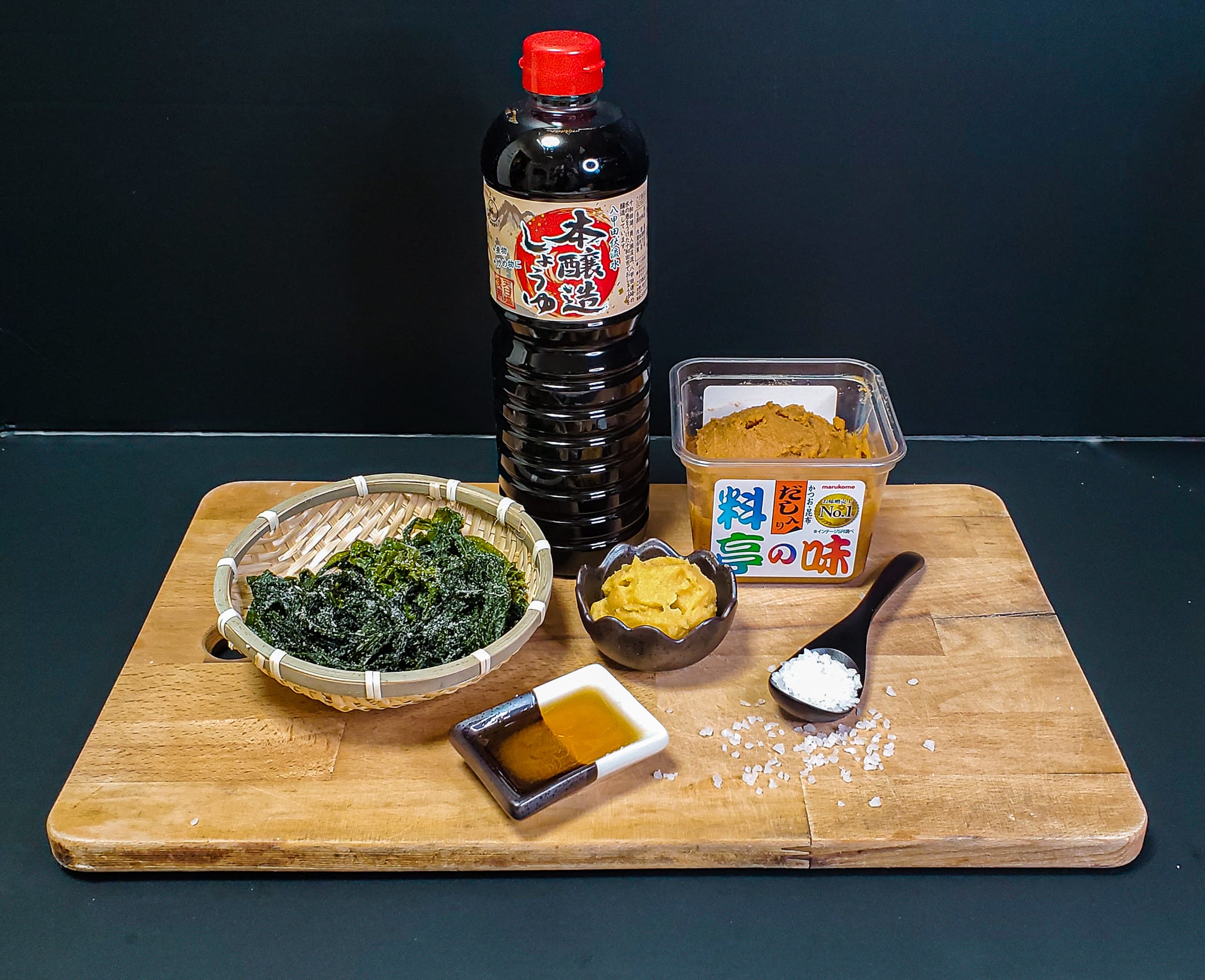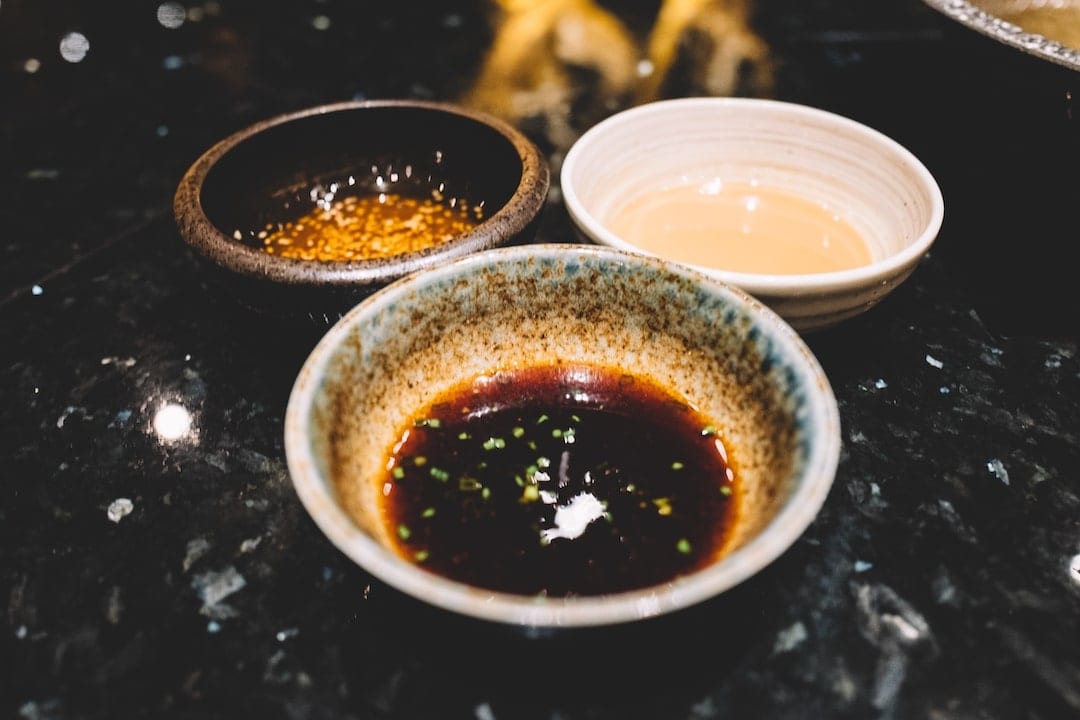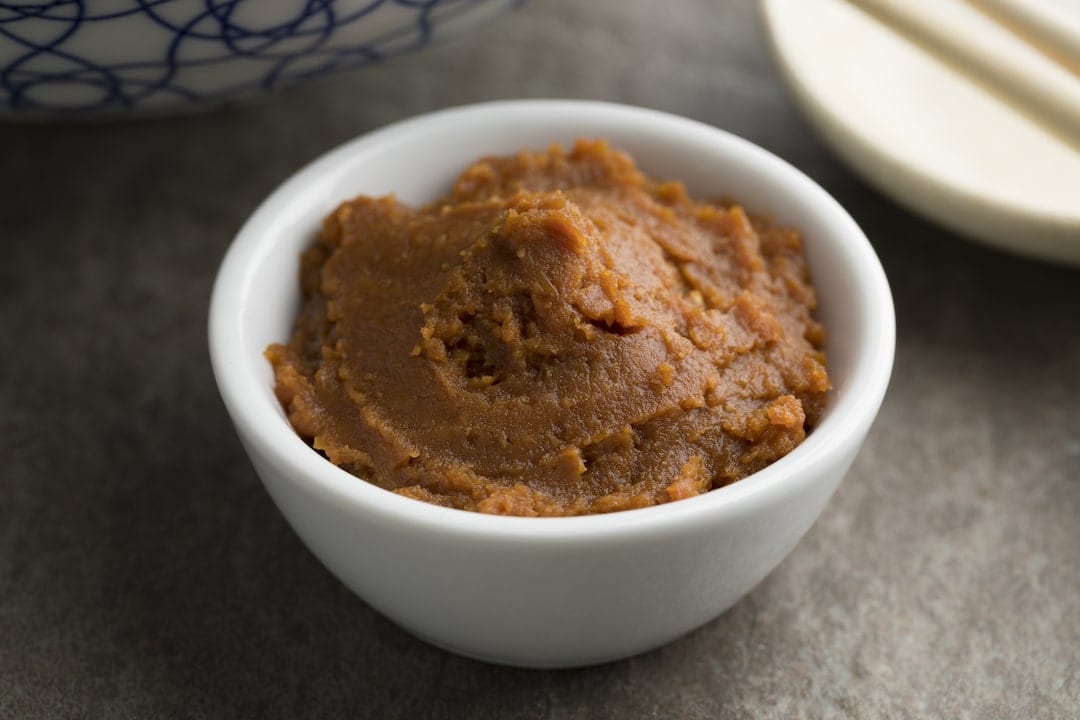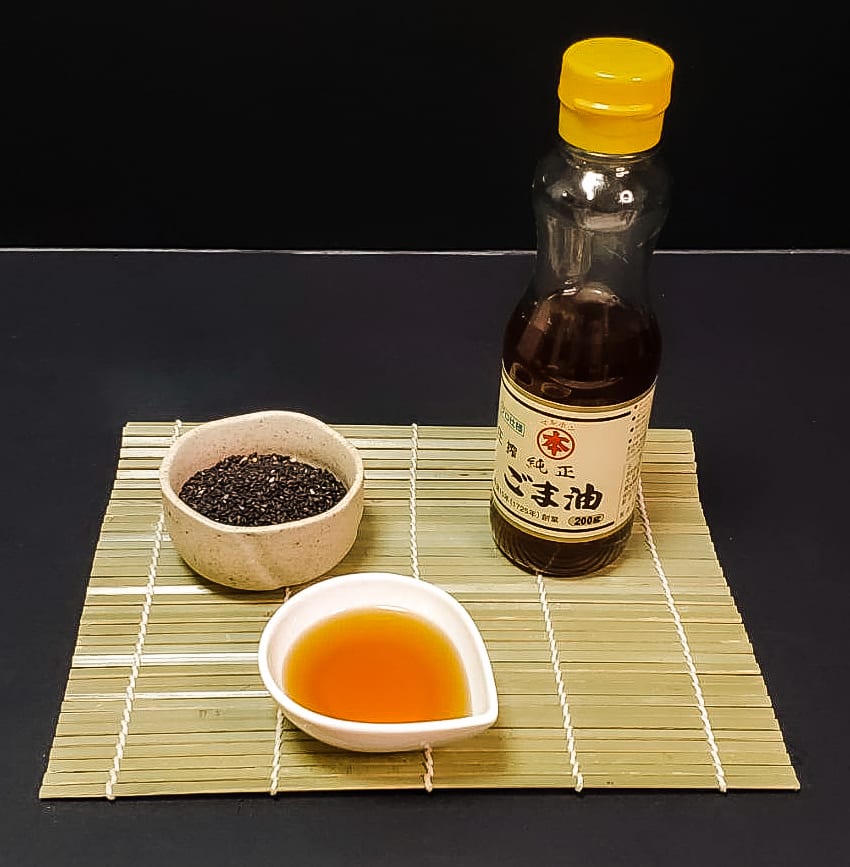No products in the cart.
February 28
塩味 (えんみ) : Enmi / Salty
0 comments
Each article augments Japanese words throughout its text. The vocabulary throughout the text is related to cooking, food, and flavor. Below each block of text will be a drop down menu that contains the meaning and reading of each word, Like this:
和食(わしょく) is a cuisine loved by people all over the world. Yet, most people don't know how to cook 和食 because they don't understand the 食材料(しょくざいりょう)in Japanese recipes.
和食(わしょく)
"Wa-shoku" – Japanese cuisine
和:わ:Japanese style; harmony
食:しょく:eat; food
食材料(しょくざいりょう)
"shokuzai-ryō"– ingredients
食:しょく:food; eat
材:ざい:lumber
料:りょう:materials
This dropdown menu can be used in your preferred study method. We recommend that you attempt to read through each section first without revealing the word meanings, and make educated guesses based on context clues. Then, reveal the word meanings and read the section once more using the drop list for reference.
This is of course completely up to you, as you might prefer to read each drop list first, before reading each section. There are no right or wrong ways to use this tool, although we DO suggest that you use some form of memorization. So try to keep the words hidden for as long as possible, or go off of memory or context for as long as you can, and don't be afraid to read a section more than once!

Of all the profiles, 塩(しお)is the chief flavor enhancer. If the 調味料(ちょうみりょう) aisle was a 国(くに), then 塩 would be its 王様(おうさま). It's so important to the evolution of 料理(りょうり) and human civilization in fact, that Roman soldiers used to be paid in it for their military service. That's where we get the term "salary" – it comes from the latin root "sal", or "salt".
Basic 塩 alone amplifies the unique flavor compounds in food, which would be pretty boring without it. Our bodies also need it to perform basic functions, so without it we'd all die!
塩(しお)
"shio" – salt
調味料(ちょうみりょう)
"chō-mi-ryō" – condiments
調:ちょう:tune; tone; arrange
味:み:flavor; taste
料:りょう:materials; fee
国(くに)
"kuni" – country
王様(おうさま)
"ōsama" – king
料理(りょうり)
"ryōri" – cooking
料:りょう:materials; fee
理:り:logic; reason; arrangement

調味料 refers not only to ready-to-use condiments like ketchup and mayo, but also to base sauces that are combined to make marinades and more complex ingredients. You wouldn't pour みりん(味醂) all over your morning 玉子(たまご), but you might mix it into the batter to make 卵焼き(たまごやき). You can add 調味料 to a larger recipe and cook it down for something greater than the sum of its parts. Interestingly, your typical 調味料 is usually just a convenient way to add one (or a mix) of the 5 major flavor profiles to whatever you're cooking.
みりん(味醂)*primarily written in kana
"mirin" – Japanese cooking wine
み:味:flavor; taste
りん:醂:bleach in water
玉子(たまご)
"tamago" – egg(s)
玉:たま:ball
子:ご:child; seed
卵焼き(たまごやき)
"tamago-yaki" – Japanese rolled omelette
卵:たまご:egg(s) *same meaning as 玉子, represented by one kanji
焼・き:や・き:to grill; to roast
Aside from the fresh Okinawan sea salt sold in shimmering crystalline packs in the grocery store, 塩 takes on several unique forms in 和食(わしょく). In fact, there's a good chance a couple of them are already sitting in your refrigerator right now: 醤油(しょうゆ)and みそ(味噌).
If salt is the 王 of 調味料, then 醤油 is the 総理大臣(そうりだいじん) of the Japanese pantry. Its kanji is a bit of a misnomer. It is neither "a kind of miso", nor an oil. The darker it is, the sweeter it is. We'll cover variants of it in a later post.
みそ is 醤油's second in command. Versatile and rich, it can be added to many dishes to influence and enhance flavor, or it can be eaten as is with fresh 野菜(やさい). Like 醤油, it comes in a number of varieties, to be covered in a separate post.
和食(わしょく)
"washoku" – Japanese cuisine
和:わ:Japanese style; harmony
食:しょく:eat; food
醤油(しょうゆ)
"shōyu" – soy sauce
醤:しょう:a kind of miso
油:ゆ:oil
みそ(味噌)*primarily written in kana
"miso" – fermented soybean paste
み:味:flavor; taste
そ:噌:robust
総理大臣(そうりだいじん)
"sōridaijin" – prime minister
総:そう:whole; all; general
理:り:logic; reason; arrangement
大:だい:big; large
臣:じん:retainer; minister; subject
野菜(やさい)
"yasai" – vegetables
野:や:plains; field; rustic
菜:さい:vegetables; greens


Both of these 調味料 are derived from fermented soybeans, and so they both have their own distinct flavor amplified by their high 塩分(えんぶん). Adding either to a dish immediately raises its 塩分, and accentuates all other flavors within it.
Dabble a piece of 刺身(さしみ)in a 醤油小皿(しょうゆこざら), and all of the subtle flavors of the freshly caught 海鮮(かいせん)will melt in your mouth like バター. Dip a cold, crisp wedge of きゅうり into a bowl of 赤味噌(あかみそ) mixed with a few droplets of rich 胡麻油(ごま油、ごまあぶら)and you'll crunch down on a vibrant symphony of robust, earthy flavors. 赤味噌 is deep in color, rich and earthy in flavor. It's usually used as a dip or as part of a marinade.
There are a lot of variations of 塩 used in 和食, and we'll revisit them in later articles. Even 醤油 and みそ have their own variants, making each of these 調味料 deserving of their own articles. You might think of your basic western supermarket variety of each as your "塩味 starter set" for your Japanese pantry. For now just remember that 塩 acts as a flavor amplifier, and without it, food would suck, and you would die.
塩分(えんぶん)
"enbun" – sodium content
塩:えん:salt
分:ぶん:portion
刺身(さしみ)
"sashimi" – raw fish
刺:さ・し:pierce; stab
身:み:body
小皿(こざら)
"kozara" – small plate for dipping sauce
小:こ:small
皿:ざら:plate
海鮮(かいせん)
"kaisen" – seafood
海:かい:ocean; sea
鮮:せん:fresh; vivid; clear; brilliant
バター(ばたー)
"batā" – ...butter
きゅうり *kanji very obscure and almost never used
"kyūri" – cucumber
赤味噌(あかみそ)
"aka miso" – red miso paste
赤:あか:red
味:み:flavor; taste
噌:そ:robust
胡麻油(ごまあぶら)
"goma-abura" – sesame oil
胡:ご:foreign; barbarian
麻:ま:hem; flax
油:あぶら:oil

So first of all, even though it's written in both kana and romaji as "goma-abura", in practice it's pronounced more like "gomAbura", with a bit of stress on the "A" in the middle.
Unlike 醤油, the kanji for "oil" is obviously used correctly here. It's has a very nutty taste and can very quickly overpower all other flavors if not used cautiously, in small amounts. It's obviously not a salt, but rather a fat. However, it's a fabulous vehicle for salt, simultaneously softening it while being enhanced by it. Always add it raw, after cooking, as heat tends to spoil it quickly. As you can see, goma-abura is quite temperamental.
For a simple yet flavorful dipping sauce for meat such as beef and pork, mix about a half a teaspoon of 塩 into a tablespoon of ごま油, adjusting to taste.
The Kanji for "salt" is 塩, read in 訓読み(くんよみ) as しお and 音読み(おんよみ) as えん. In its descriptive forms, it retains its original kanji, but its pronunciation changes:
You might season a pack of 牛肉(ぎゅうにく)with a whole handful of 塩 as you learned to do on your favorite Netflix cooking documentary. The nice lady with the big vocabulary explained to you how adding more than you think you need will really draw out the 肉's natural 味. Your room mate, horrified at the mound of white crystals, balks at how 塩っぱい it will surely be. Confident, you reassure him that it's actually just the right amount of 塩味 to bring the dish to life.
You sauté it using a hot wok in a tablespoon of rich 加塩バター(かえんばたー), you know, for that extra boost. You delicately lay your creation over a bed of freshly cooked ご飯(ごはん), and pour yourself a glass of red wine. Tonight you're goin' fancy. You take a sip of the wine, and swish it around in your mouth, breathing the flavors in. So classy.
訓読み(くんよみ)
"kunyomi" – the native Japanese reading of a kanji
訓:くん:instruction; native Japanese reading
読・み:よ・み:reading
音読み(くんよみ)
"onyomi" – the Chinese-derived reading of a kanji
音:おん:sound
読・み:よ・み:reading
牛肉(ぎゅうにく)
"gyū niku" – beef
牛:ぎゅう:beef; cow
肉:にく:meat; flesh
加塩バター(かえんばたー)
"ka-en batā" – salted butter
加:か:add; join; include
塩:えん:salt
ご飯(ごはん)
"gohan" – rice; meal
ご:御:honorific marker denoting something deserving of respect
飯:はん:meal; boiled rice
Then, you pick up a succulent mouthful with your はし as your roommate curiously watches from the kitchen counter, and...
...
*BLECHHHH*

The 塩分 is staggeringly high, and your entire mouth writhes in disgust as you spit a ball of the half mashed up mystery meat into a paper towel. The 塩っぱさ is unbearable! Unfortunately the nice lady from the cooking show failed to mention that this trick only works on large roasts with a lot of surface area – NOT on shredded meat. Maybe next time, bucko.
Alternatively, 塩っぱい carries a variety of meanings:
So basically, everything you might expect, and then some. Now you know what to say the next time your favorite sumo team loses.
If you're ready to add a little sweet to your salty, then click through to the next installment in our series – SWEET!
味(あじ)
"aji" – flavor; taste
塩味(えんみ)
"enmi" – salty
塩:えん:salt
味:み:flavor; taste
甘味(かんみ)
"kanmi" – sweet
甘:かん:sweet
味:み:flavor; taste
酸味(さんみ)
"sanmi" – sour
酸:さん:acid
味:み:flavor; taste
旨味(うまみ)
"umami" – savory
旨:うま:savory; skilled; great
味:み:flavor; taste
苦味(にがみ)
"nigami" – bitter
苦:にが:bitter
味:み:flavor; taste
料理(りょうり)
"ryōri" – cooking
料:りょう:materials; fee
理:り:logic; reason; arrangement
和食(わしょく)
"Washoku" – Japanese cuisine
和:わ:Japanese style; harmony
食:しょく:eat; food
味付け(あじつけ)
"aji-tsuke" – flavor development
味:あじ:flavor; taste
付け:つけ:to add; to join; to fix
調味料(ちょうみりょう)
"chō-mi-ryō" – condiments
調:ちょう:tune; tone; arrange
味:み:flavor; taste
料:りょう:materials; fee
量(りょう)
"ryō" – amount
濃・い(こ・い)
"koi" – strong; dark; potent
小皿(こざら)
"kozara" – small plate for dipping sauce
小:こ:small
皿:ざら:plate
食べ物(たべもの)
"tabemono" – food
食べ:たべ:food; eat
物:もの:thing; object
野菜(やさい)
"yasai" – vegetable
野:や:plains; field; rustic
菜:さい:vegetables; greens
果物(くだもの)
"kudamono" – fruit
果:くだ:fruit; reward
物:もの:thing; object
きゅうり *kanji very obscure and almost never used
"kyūri" – cucumber
動物(どうぶつ)
"dōbutsu" – animals
動:どう:move; motion
物:ぶつ:thing; object
肉(にく)
"niku" – meat; flesh
牛肉(ぎゅうにく)
"gyū niku" – beef
牛:ぎゅう:beef; cow
肉:にく:meat; flesh
鶏もも(とりもも)
"torimomo" – chicken thigh
鶏:とり:chicken
もも:thigh
玉子(たまご)
"tamago" – egg(s)
玉:たま:ball
子:ご:child; seed
卵焼き(たまごやき)
"tamago-yaki" – Japanese rolled omelette
卵:たまご:egg(s) *same meaning as 玉子, represented by one kanji
焼・き:や・き:to grill; to roast
刺身(さしみ)
"sashimi" – raw fish
刺:さ・し:pierce; stab
身:み:body
海鮮(かいせん)
"kaisen" – seafood
海:かい:ocean; sea
鮮:せん:fresh; vivid; clear; brilliant
ご飯(ごはん)
"gohan" – rice; meal
ご:御:honorific marker denoting something deserving of respect
飯:はん:meal; boiled rice
塩(しお)
"shio" – salt
塩っぱ・い:しょっぱ・い:salty (adjective)
塩っぱ・さ:しょっぱ・さ:saltiness (noun)
塩味:えん・み:subjective level of saltiness (noun)
塩分(えんぶん)
"enbun" – salt content; The amount of sodium in a food
塩:えん:salt
分:ぶん:portion
醤油(しょうゆ)
"shōyu" – soy sauce
醤:しょう:a kind of miso
油:ゆ:oil
みそ(味噌)*primarily written in kana
"miso" – fermented soybean paste
み:味:flavor; taste
そ:噌:robust
赤味噌(あかみそ)
"aka miso" – red miso paste
赤:あか:red
味:み:flavor; taste
噌:そ:robust
みりん(味醂)*primarily written in kana
"mirin" – Japanese cooking wine
み:味:flavor; taste
りん:醂:bleach in water
砂糖(さとう)
"satō" – sugar
砂:さ:sand
糖:とう:sugar
腐ってる(くさってる)
"kusatteru" – rotting; rotten
腐る:くさる:to rot; to go bad; to decay; to spoil
酸っぱい(すっぱい)
"suppai" – sour
肉(にく)
"niku" – meat; flesh
苦い(にがい)
"nigai" – bitter
注意(ちゅうい)
"chūi" – CAUTION
注:ちゅう:concentration; notes; to pour into
意:い:idea; mind; thought
危険(きけん)
"kiken" – danger; hazard
危:き:dangerous; fear
険:けん:steep place; sharp eyes; precipitous
毒性(どくせい)
"dokusei" – toxic; poisonous
毒:どく:poison; germ
性:せい:essential nature; gender
辛味(からみ)
"karami" – spiciness (subjective)
辛:から:spicy
味:み:flavor
バター(ばたー)
"batā" – ...butter
加塩バター(かえんばたー)
"ka-en batā" – salted butter
加:か:add; join; include
塩:えん:salt
胡麻油(ごまあぶら)
"goma-abura" – sesame oil
胡:ご:foreign; barbarian
麻:ま:hem; flax
油:あぶら:oil
炭水化物(たんすいかぶつ)
"tansui-kabutsu" – carbohydrates
炭:たん:charcoal
水:すい:water
化:か:change; take the form of
物:ぶつ:thing; object
蛋白質(たんぱくしつ)
"tanpaku-shitsu" – protein
蛋:たん:egg white
白:ぱく:white
質:しつ:substance; quality
脂肪質(しぼうしつ)
"shibō-shitsu" – fat
脂:し:fat; grease; lard
肪:ぼう:obese; fat
質:しつ:substance; quality
塩分(えんぶん)
"enbun" – sodium content
塩:えん:salt
分:ぶん:portion
訓読み(くんよみ)
"kunyomi" – the native Japanese reading of a kanji
訓:くん:instruction; native Japanese reading
読・み:よ・み:reading
音読み(くんよみ)
"onyomi" – the Chinese-derived reading of a kanji
音:おん:sound
読・み:よ・み:reading
国(くに)
"kuni" – country
王様(おうさま)
"ōsama" – king
総理大臣(そうりだいじん)
"sōridaijin" – prime minister
総:そう:whole; all; general
理:り:logic; reason; arrangement
大:だい:big; large
臣:じん:retainer; minister; subject
Did you like this article? Please share it around!
Tags
food
Never miss a post – let us slide into your inbox with hot articles.
Session expired
Please log in again. The login page will open in a new tab. After logging in you can close it and return to this page.